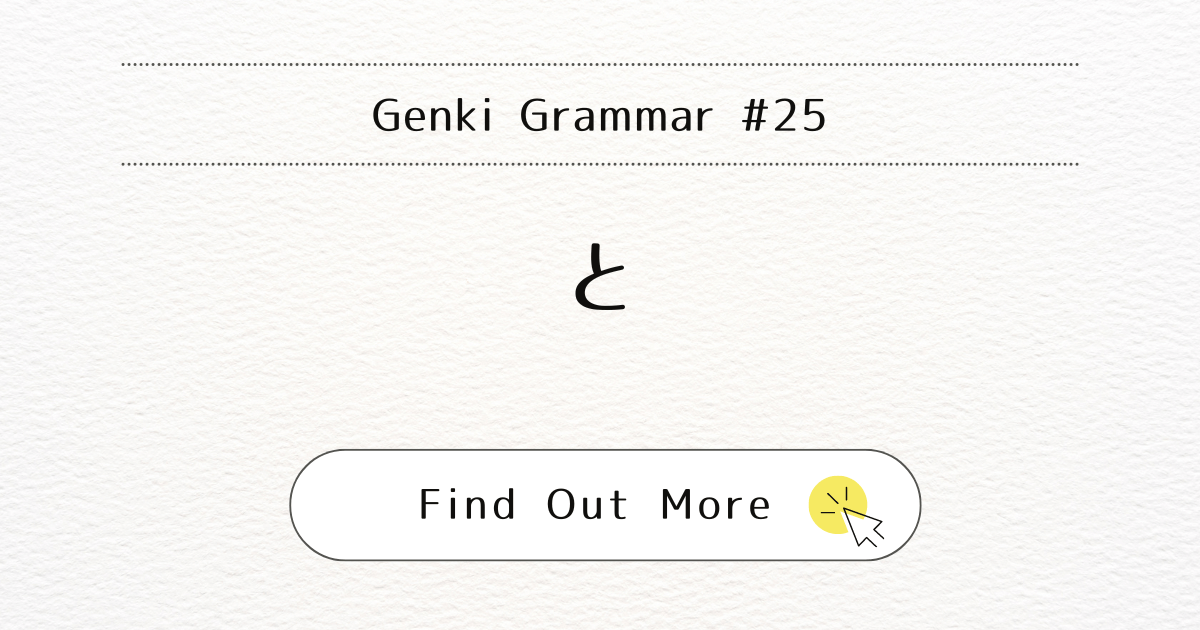
Introduction
In this post, we will learn about the particle と (to). This particle is very useful in Japanese and has two main functions. Let’s explore them together!
What it means
The particle と (to) has two main meanings:
- Connecting two nouns
- Describing “together with” someone
When you use it
- Connecting Nouns:
Use と (to) to connect two nouns. It cannot be used to connect adjectives, verbs, or sentences.
Example:
- 日本語と英語を話します。
(Nihongo to eigo o hanashimasu.)
I speak Japanese and English. - 東京と横浜に行きました。
(Tokyo to Yokohama ni ikimashita.)
I went to Tokyo and Yokohama.
- Together With:
Use と (to) to describe doing something together with someone.
Example:
- マリアさんはりくさんと韓国に行きます。
(Maria-san wa Riku-san to Kankoku ni ikimasu.)
Maria will go to Korea with Riku.
Note
Be careful! In Japanese, と (to) is not used like “with” in English when referring to tools or means. We will learn more about this in a future post.
Conclusion
The particle と (to) is essential for connecting nouns and describing actions done together with someone.



